4 more Webb images! Wow!
NASA – with the European Space Agency (ESA) and the Canadian Space Agency (CSA) – released the first images from the mighty James Webb Space Telescope during a televised broadcast yesterday, July 12, 2022. Events then extended into today (July 13), with the release of four more Webb images.
Here they are!
1. Southern Ring Nebula
The Southern Ring, or “Eight-Burst” nebula, is a planetary nebula, that is, an expanding cloud of gas surrounding a dying star. It is nearly half a light-year in diameter and is located approximately 2,000 light years away from Earth.
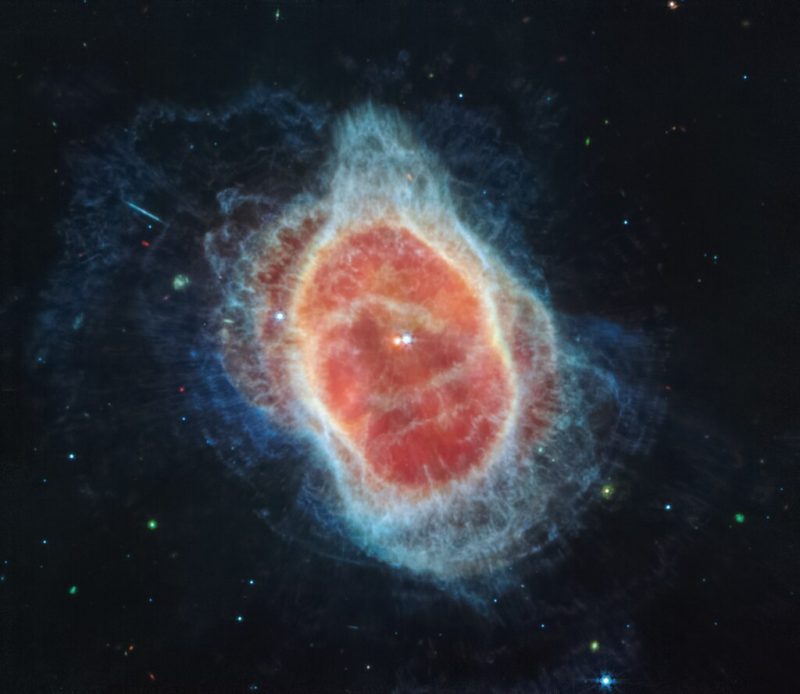
2. Stephan’s Quintet
About 290 million light-years away, Stephan’s Quintet is located in the constellation Pegasus. It is notable for being the first compact galaxy group ever discovered in 1877. Four of the five galaxies within the quintet are locked in a cosmic dance of repeated close encounters.
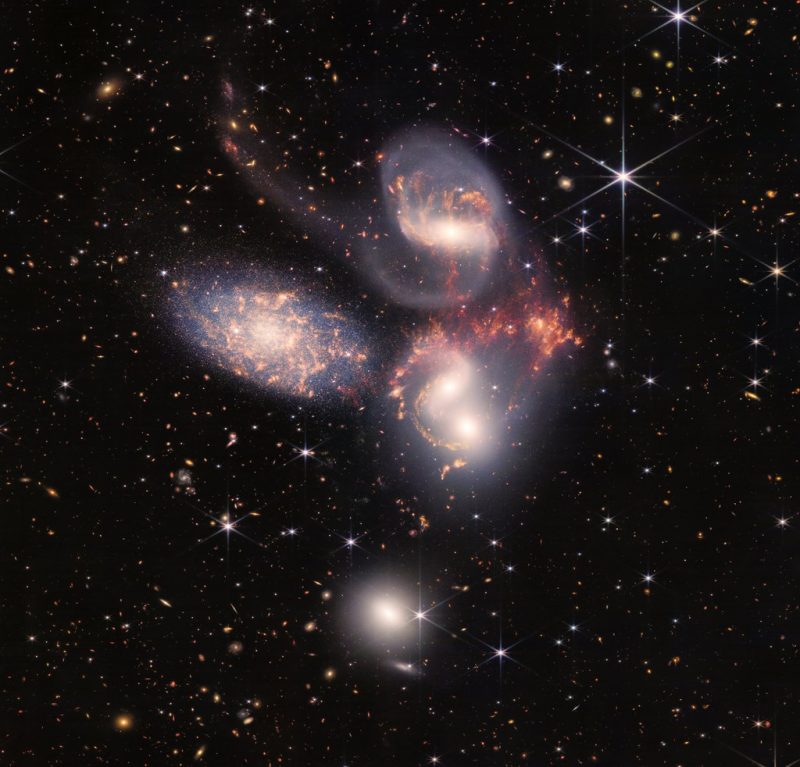
3. Carina Nebula
The Carina Nebula is one of the largest and brightest nebulae in the sky, located approximately 7,600 light-years away in the southern constellation Carina. Nebulae are stellar nurseries where stars form. The Carina Nebula is home to many massive stars, several times larger than our sun.
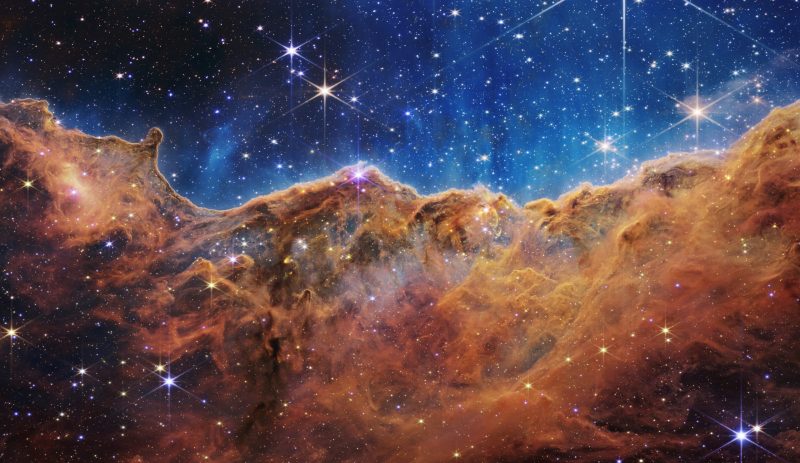
4. WASP-96 b (spectrum)
WASP-96 b is a giant planet outside our solar system, composed mainly of gas. The planet, located nearly 1,150 light-years from Earth, orbits its star every 3.4 days. It has about half the mass of Jupiter, and its discovery was announced in 2014.
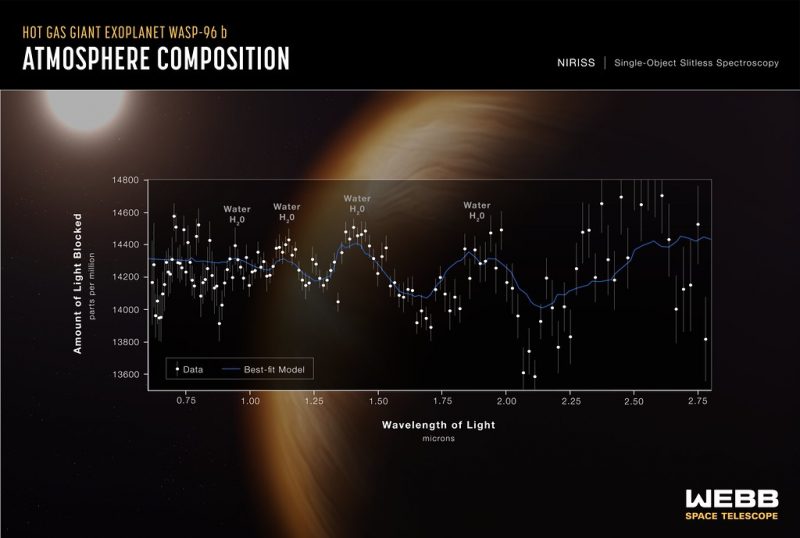
Image via NASA, ESA, CSA, and STScI.
SMACS 0723: 1st Webb image released Monday
NASA and its partners released the very first Webb image in late afternoon on Monday, at a special presentation at the White House. The image shows a galaxy cluster called SMACS 0723 (fuzzy object, center of photo), 4.6 billion light-years away. The massive cluster acts as a gravitational lens, magnifying much more distant galaxies behind it and so bringing them into view. Thousands of galaxies appear in Webb’s first image, which is being called Webb’s 1st Deep Field.
Read about Monday’s image release

I had to make a before and after to really appreciate how good the James Webb Telescope really is. pic.twitter.com/dj0HL8XGaZ
— Jason Short (@jason4short) July 11, 2022
Stay connected
NASA invites you to stay connected with the mission and share your experience with Webb’s first images on Twitter, Facebook, and Instagram with #UnfoldTheUniverse. You can follow and tag these accounts:
Twitter: @NASA, @NASAWebb
Facebook: NASA, NASAWebb
Instagram: NASA, @NASAWebb
Here is a list of release activities (all times Eastern):
Tuesday, July 12, activities: Starting at 10:30 EDT
Formal Image Release – Live coverage of the image release broadcast aired on NASA TV, the NASA app, and the agency’s website. The public also can watch live on Facebook, Twitter, YouTube, Twitch, and Daily Motion.
NASA Social: NASA hosted an in-person NASA Social on Tuesday, July 12. Participants joined as guests for the in-studio filming of the televised broadcast at NASA Goddard, tour NASA Goddard and STScI facilities, and interacted with experts from the Webb mission.
Wednesday, July 13, activities: Starting at 3 p.m. EDT
NASA Science Live: Webb experts will answer questions about the first images and data in a NASA Science Live show. The broadcast, Webb’s First Full-Color Images Explained, will air live on the NASA Science Live website, as well as YouTube, Facebook, and Twitter. Viewers of this episode can submit questions on social media using the hashtag #UnfoldtheUniverse or by leaving a comment in the chat section of the Facebook or YouTube stream.
At the same time, NASA also will broadcast a live social media event in Spanish on its NASA en español YouTube, Facebook, and Twitter accounts. Webb experts Begoña Vila and Néstor Espinoza will discuss the release of the first images and take questions from followers.
NASA Social: The agency will host a second in-person NASA Social today, Wednesday, July 13. Participants will join as guests for the in-studio filming of the televised broadcast at NASA Goddard, tour NASA Goddard and STScI facilities, and interact with experts from the Webb mission.
Activities throughout the summer
Webb Community Events: The public can also join in the excitement of Webb’s first full-color images by attending one of the many official Webb Space Telescope Community Events taking place across the country this summer. The list of events celebrating Webb’s first images is available online and updated frequently.
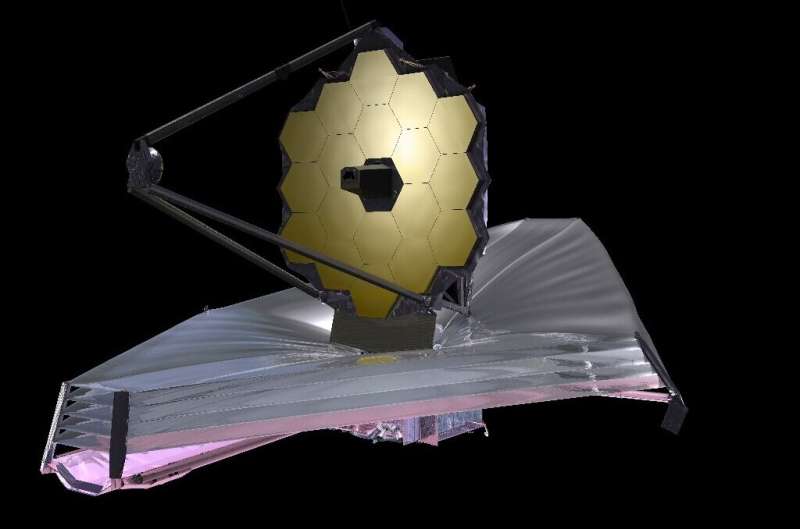
Webb launched in late 2021
The Webb is a marvelous machine. And the dream to build it began as early as 1996, when an 18-member committee of astronomers formally recommended that NASA develop a space telescope that would view the heavens in infrared light. Launch was initially planned for 2007. The price tag was initially US $500 million. Then the delays began.
Webb finally launched to space on December 25, 2021, from the Guiana Space Center (sometimes called Europe’s Spaceport) at Kourou in French Guiana.
Following launch, the telescope began a month-long journey to the sun-Earth Lagrange point known as L2. This point in the sun-Earth system lets the spacecraft “hover” with respect to Earth as both Earth and the spacecraft orbit the sun. The point is about four times the moon’s distance away (about 1 million miles away from the Earth, or about 1.6 million km). On January 24, 2022, a mid-course correction burn inserted Webb into its final orbit at L2.
The Webb ground crew has spent the intervening months in a shake-down phase for the telescope, making sure its mirrors are fully aligned and its instruments are working correctly. Webb did release some test images in May 2022.
Webb will explore every phase of cosmic history – from within the solar system to the most distant observable galaxies in the early universe – and everything in between.
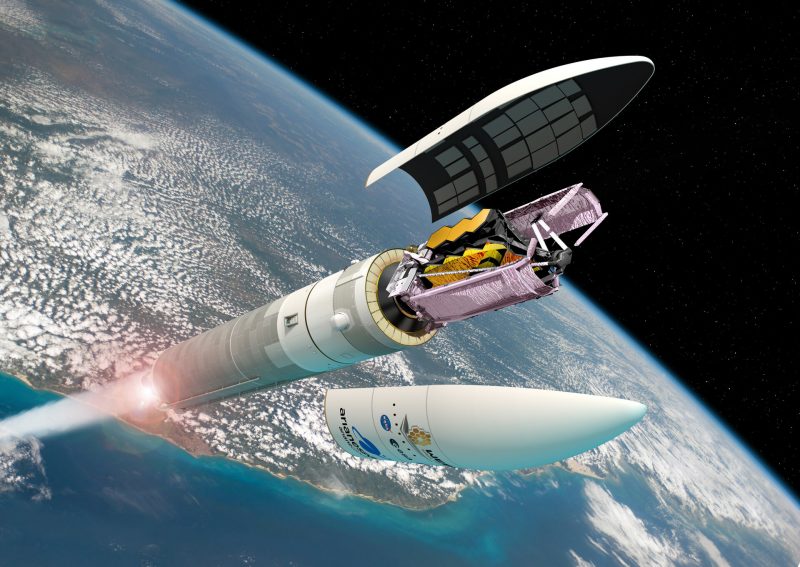
Bottom line: NASA released the much-anticipated first Webb images in July 12, 2022. Images and videos here.
NASA Shares List of Cosmic Targets for Webb Telescope’s First Images











